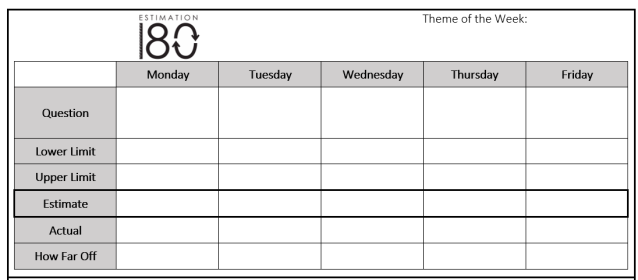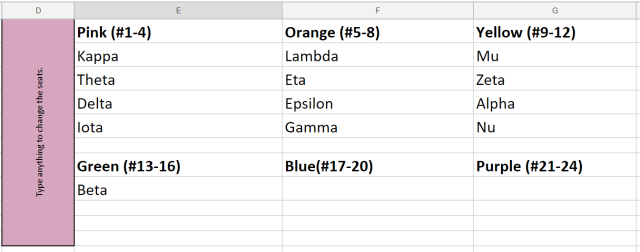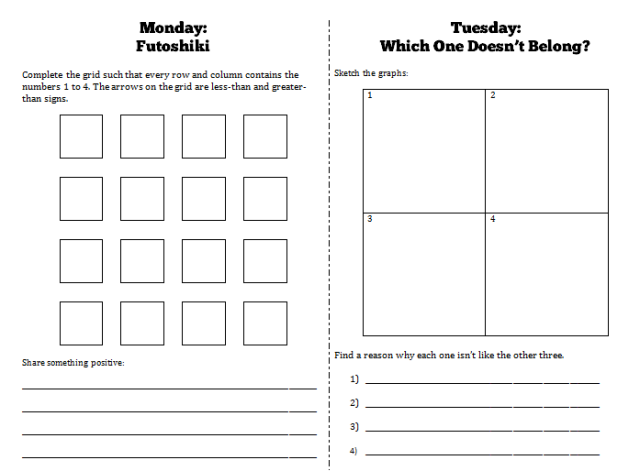I’m a little late, but I’m going to try to keep up with the #MTBoS Challenge. Although I’m back at work this week, the students don’t arrive until the day after Labor Day. For the first week, my plans for Algebra I and Pre-Algebra are almost the same. As of right now, my plans are a little shaky, but this is what I’m thinking right now:
Tuesday:
Our bell schedule will almost certainly be strange, as it has been previously. The high school will have their welcome assembly in the morning, which keeps the middle school in 1st period for an extended amount of time (maybe 75 minutes?). Then, the middle school will have its assembly and high school will stay in 1st period. For clarification, the middle school and high school share a building and so some teachers, myself included, teach both high school and middle school students. This year, though, I don’t have Algebra I first period, so I can actually go to the assembly and not repeat 1st period twice. The rest of Tuesday’s schedule will be out of order and shorter classes (30 minutes).
To get started, students will find their seat by solving a simple math problem; the seats are numbered 1 – 24. Then, I want the students to look around the room and do Notice and Wonder. They’ll post their thoughts on post-it notes on the board. I think I’ll also introduce Krypto and maybe SET.
Wednesday:
A few years ago, I started using ideas from Education Week on getting students’ seating arrangements for the first few days. It’s really interesting to see how they interact and how many of them just give up on the whole idea. For this first day, students will seat themselves by alphabetical order of first name.
In Pre-Algebra, I think I’ll have students work through Fawn’s “Odd One Out” and in Algebra I, the Algebraic Thinking puzzles.
While students are working on a personality/learning survey (I haven’t decided which one I want to use yet), I will check out the textbooks. I never refer to the textbooks (they’re old and don’t match with the curriculum anymore), but some of the students like to have them as a reference and I don’t have the storage space for the books in my classroom.
Thursday:
Students will seat themselves by birthday, January to December.
For each class, we’ll pass out the syllabus and discuss the highlights. We’ll set up the interactive notebooks by gluing in the syllabus and the index pages. Then, we’ll fill out the unit organizers (division mandate) for the first unit.
Friday:
Students will seat themselves in order by height, shortest to tallest. They have to do this one silently, which is an extra challenge.
In both classes, students will do a word sort to review for verbal translations. I’d also like them to do a walk-around for writing verbal expressions. So, having several algebraic expressions for small groups or pairs to translate and then doing a rotation to see how many different ways each can be written, if that makes sense.
#MTBoS Challenge





